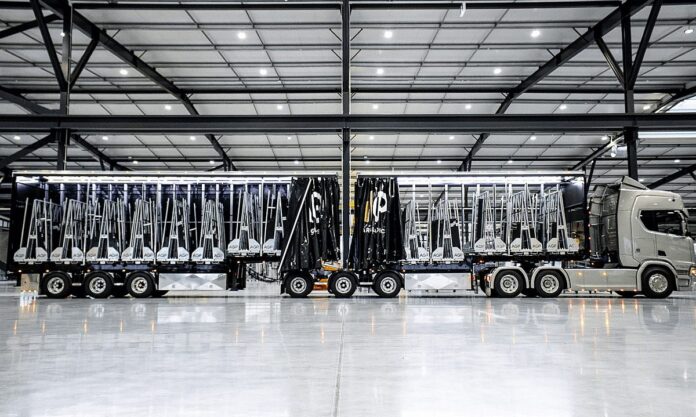New Zealand glass manufacturer Architectural Glass Products (AGP) has recruited local pair Pollin8 and Thinxtra, providing IoT gadgetry and IoT networking respectively, to deploy low-power wide-area (LPWA) battery-powered Sigfox trackers on 1,750 delivery trolleys, carrying glass products to customers around the country. The trolleys are worth NZ$3,000 each, and are used to ferry expensive double glazed glass; their new IoT trackers afford AGP a live position on their whereabouts, and a means to avoid losses and delays, and to meet its customer promise on four-day order-to-delivery cycles.
AGP, part of New Zealand-based ‘window and door system’ company PGL Group, was founded in 2019, and is described as a “brand-new state-of-the-art” manufacturing business, offering “short, predictable timeframes” on deliveries. It works from a “four-hecate, highly-automated… custom” factory in the Hautapu township on Te Ika-a-Māui, New Zealand’s North Island. It is also described as “largest manufacturer of insulated glass units” in the country. Missing trolleys, it says, means financial losses, and missed delivery targets, potentially.
Thinxtra is a member of 0GUN Alliance of Sigfox operators; it also runs Sigfox networks in Australia, Hong Kong, and Macao. Pollin8 develops IoT hardware and software, tied to a white-label IoT management platform subscription; it targets factories, cities, and farms, as its prime customer ‘verticals’. The Pollin8 trackers transmit the GPS location, and network triangulation data where a GPS signal is unavailable, of AGP trolleys over Thinxtra’s network, and makes their position visible in its platform to retrieve trolleys, as required, and to optimise its delivery schedules.
A statement said: “AGP selected Pollin8 and Thinxtra because the combined IoT solution is extremely cost-effective, making it ideally suited to the manufacturer’s plans for continued expansion. The devices are quick to install, and the Sigfox network allows AGP to simply connect the sensors to the IoT without needing to invest in building or maintaining any communications infrastructure. AGP also stands to save costs over time as the devices are battery-powered and last several years, reducing need for replacement, and don’t require ongoing maintenance.”
Gene Sanford, a spokesperson at AGP, said: “Rather than resorting to the time consuming task of counting assets on a map with a basic GPS solution, we have a dashboard and data that inform us which customer has the trolleys and how long they have had them, enabling us to quickly take action to maintain our high service levels. Our customers’ cash flow can be improved significantly knowing their supply will be delivered on time; getting our assets back quickly to fulfil the next set of orders helps mitigate any knock-on effect that might impact them.”
Nicholas Lambrou, chief executive at Thinxtra, said: “AGP has built a highly-sophisticated operation underscored by incredible efficiency, which has catapulted the company to the pinnacle of glass supply in New Zealand. By bringing IoT into the mix from a very early stage, AGP gained granular visibility over the assets responsible for safely transporting its glass products to a fast-growing network of customers, avoiding unnecessary losses, and maintaining its stringent customer service level agreements.”
Nick Pickering, chief executive at Pollin8, said: “Although GPS based tracking solutions have been available for powered vehicles for decades, IoT has introduced the capability to deliver tracking of non-powered assets using devices with long battery life in an affordable manner and at scale. That means we can provide AGP with not only around the clock tracking, but tailor the solution to its unique business requirements now and as its business expands in the future.”
A press note suggested the new Sigfox-based IoT solution will save on energy and fuel costs, too, on the grounds that delivery vehicles can be better routed. Craig Weise, chief executive at New Zealand Green Investment Finance, said: “The combination of IoT devices and data has created a tremendous opportunity to reduce carbon emissions. With the ability to better track vehicles and assets, organisations can reduce their environmental impact by optimising fleets and routing to shorten time on the road, while avoiding waste from lost assets.”

